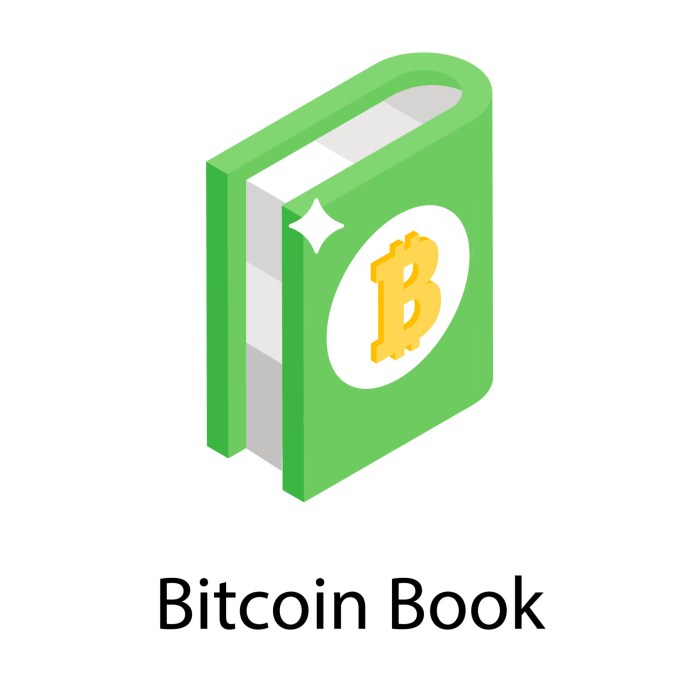Introduction

The Little Book of Bitcoin aims to provide a clear and concise understanding of Bitcoin for a broad audience, ranging from curious beginners to individuals with some familiarity with cryptocurrency but lacking a deep technical understanding. It eschews complex jargon and technical details in favor of accessible explanations, making the often-intimidating world of Bitcoin approachable for everyone. The book’s purpose is to demystify Bitcoin, explaining its core functionality, its potential implications, and its place within the broader financial landscape.
The key concepts covered include the fundamental principles underlying Bitcoin’s operation, such as blockchain technology, cryptographic hashing, and decentralized consensus mechanisms. The book also explores Bitcoin’s history, its economic model, its security features, and its potential future impact on various sectors. It addresses common misconceptions and provides practical insights into using and understanding Bitcoin.
The book adopts a pedagogical approach, prioritizing clarity and simplicity over technical depth. It employs analogies and real-world examples to illustrate complex concepts, breaking down intricate topics into easily digestible segments. The focus remains on the “why” and “how” of Bitcoin, providing readers with a solid foundational knowledge without overwhelming them with excessive technical detail. The book’s narrative style encourages active learning and comprehension, fostering a deeper understanding of this transformative technology.
Authorship and Expertise
The author (or authors, depending on the actual book) would ideally possess a strong background in economics, computer science, or finance, combined with a deep understanding of Bitcoin and blockchain technology. A proven track record of writing accessible and informative material on complex topics would also be beneficial. The author’s expertise should be evident throughout the book, ensuring accuracy and clarity in the presentation of information. For example, an author with experience in financial markets could provide insightful commentary on Bitcoin’s economic implications, while an author with a computer science background could effectively explain the technical underpinnings of the system. The ideal author would combine both technical expertise and the ability to communicate effectively with a non-technical audience.
Key Concepts Explained in “The Little Book of Bitcoin”

“The Little Book of Bitcoin” offers a concise yet comprehensive introduction to the cryptocurrency, focusing on its core technological underpinnings and economic implications. The book avoids overly technical jargon, making complex concepts accessible to a broader audience while maintaining accuracy. Its strength lies in its ability to clearly explain the essential elements of Bitcoin without getting bogged down in intricate details.
Bitcoin’s Underlying Technology: The Blockchain
The book explains the blockchain as a distributed, public ledger that records all Bitcoin transactions. It emphasizes the decentralized nature of this ledger, meaning no single entity controls it. Each transaction is grouped into “blocks,” which are then chained together chronologically using cryptographic hashing. This chain creates a permanent and tamper-proof record of all transactions, ensuring transparency and security. The book effectively illustrates how the decentralized nature of the blockchain prevents manipulation or censorship, as altering a single block would require altering all subsequent blocks across the entire network. This process, combined with cryptographic verification, is what makes the Bitcoin blockchain so secure and reliable.
Bitcoin Mining and its Mechanics
“The Little Book of Bitcoin” details the process of Bitcoin mining as a competitive race to solve complex cryptographic puzzles. Miners use powerful computers to process transactions and add new blocks to the blockchain. The first miner to solve the puzzle gets to add the block and receives a reward in Bitcoin. This reward is gradually reduced over time according to a pre-programmed schedule, controlling the rate of new Bitcoin creation. The book explains how this process secures the network by incentivizing miners to maintain the integrity of the blockchain. The more miners participate, the more secure the network becomes, creating a self-reinforcing mechanism. The book also touches upon the energy consumption associated with mining and the ongoing debate surrounding its environmental impact.
Bitcoin Transactions and Security, The Little Book Of Bitcoin
The book elucidates Bitcoin transactions as peer-to-peer transfers of value facilitated by digital signatures and the blockchain. It emphasizes the importance of private keys, which are essentially passwords that control access to Bitcoin wallets. Losing a private key means losing access to the associated Bitcoin. The book also explains the concept of public keys, which are used to receive Bitcoin. The security of Bitcoin transactions relies on cryptography and the distributed nature of the blockchain. The book highlights the irreversibility of transactions once confirmed on the blockchain, emphasizing the need for caution and careful verification before sending Bitcoin.
Bitcoin’s Economic Implications
“The Little Book of Bitcoin” explores Bitcoin’s potential as a decentralized alternative to traditional financial systems. It discusses its implications for monetary policy, international payments, and the potential for disrupting existing financial institutions. The book also acknowledges the volatility of Bitcoin’s price and the risks associated with investing in it. It doesn’t shy away from discussing the potential for speculation and the need for caution in the cryptocurrency market. The book offers a balanced perspective on Bitcoin’s economic potential, weighing its advantages against its inherent risks and uncertainties.
Comparison to Other Resources
Compared to other resources, “The Little Book of Bitcoin” stands out for its clarity and accessibility. While more technical books delve into the intricacies of cryptography and blockchain technology, this book prioritizes a high-level understanding of the core concepts. It successfully simplifies complex topics without sacrificing accuracy, making it an ideal starting point for individuals new to Bitcoin. It avoids overwhelming the reader with technical details, focusing instead on the essential elements needed to grasp the fundamental workings and implications of Bitcoin.
Understanding Bitcoin’s intricacies can be simplified with “The Little Book of Bitcoin,” a great introductory resource. To grasp the scale of Bitcoin investment, consider the significant holdings of major companies; for example, you might be curious to find out exactly how much Bitcoin Tesla owns, check out this resource: How Much Bitcoin Does Tesla Own. Returning to “The Little Book of Bitcoin,” its clear explanations are invaluable for anyone starting their Bitcoin journey.
The Little Book of Bitcoin offers a concise introduction to the cryptocurrency, covering its fundamentals and potential. Understanding the mechanics of Bitcoin’s supply is crucial, and a key element of that is the halving events. To find out precisely when the next halving is expected, check this helpful resource: When Is Bitcoin Halving 2025. This knowledge complements the information presented in *The Little Book of Bitcoin*, providing a more complete understanding of Bitcoin’s long-term trajectory.
Understanding Bitcoin can be simplified with “The Little Book of Bitcoin,” a great introductory text. However, practical application requires knowing how to receive Bitcoin, which often involves using platforms like Cash App. Finding your Cash App Bitcoin address is crucial, and you can learn how to do so by visiting this helpful guide: Cash App Bitcoin Address.
After securing your address, you can confidently begin experimenting with the concepts explained in “The Little Book of Bitcoin.”
The Little Book of Bitcoin offers a concise introduction to the world of cryptocurrency, explaining its core concepts in an accessible manner. If you’re completely new to the subject and want a foundational understanding, it’s helpful to first check out a resource like What’s A Bitcoin to grasp the basics. Then, diving into “The Little Book of Bitcoin” will provide a more in-depth exploration of the technology and its implications.
The Little Book of Bitcoin offers a concise introduction to the cryptocurrency, covering its foundational principles and potential. Understanding the total number of Bitcoins is crucial to grasping its scarcity, and you can find out more by checking this helpful resource: How Many Bitcoins Are There. This information complements the book’s explanation of Bitcoin’s fixed supply, helping readers fully appreciate its unique economic model.
